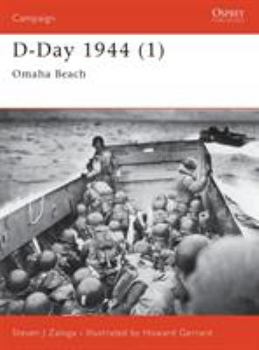D-Day 1944 (1): Omaha Beach
(Part of the Osprey Campaign (#100) Series, D-Day 1944 (#1) Series, and Osprey Campaign (#100) Series)
Select Format
Select Condition 
Book Overview
The first title in Osprey's survey of the D-Day landings of World War II (1939-1945). The D-Day landings of 6 June 1944 were the largest amphibious military operation ever mounted. The greatest armada the world had ever seen was assembled to transport the Allied invasion force across the Channel and open the long-awaited second front against Hitler's Third Reich. Of the landings on the five assault beaches, Omaha Beach was the only one ever in doubt...
Format:Paperback
Language:English
ISBN:1841763675
ISBN13:9781841763675
Release Date:July 2003
Publisher:Osprey Publishing (UK)
Length:96 Pages
Weight:0.65 lbs.
Dimensions:0.3" x 7.3" x 9.7"









